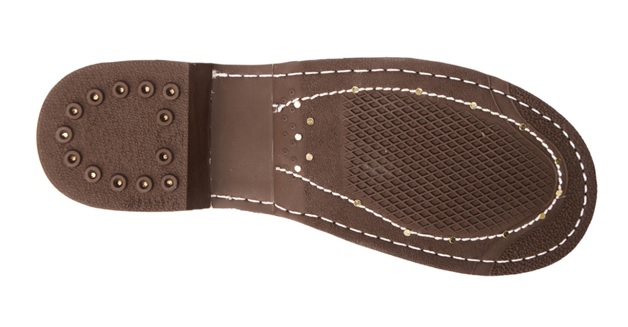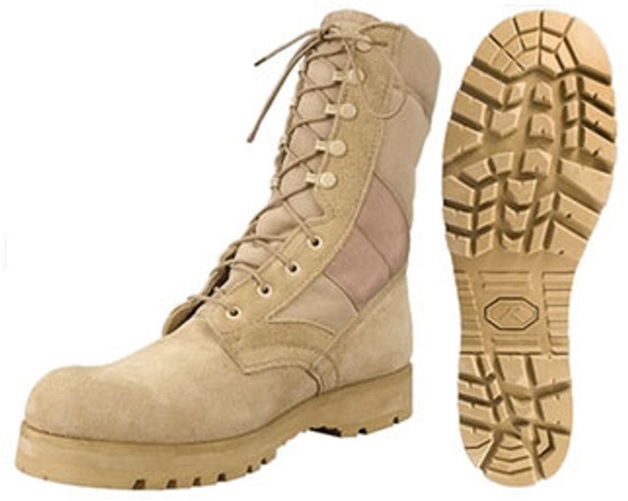How to Shop Kids’ Combat Boots
Posted by: Fatigues Army Navy Outdoor Gea on 18th Sep 2024
Lots of gear targeted at kids is made of very low quality, probably with the expectation that kids beat up whatever they own and it has a short service lifespan if they’re going to outgrow it anyway.
With that said, there’s no reason you can’t find quality in kids’ combat boots, provided you know what to look for.
Here are some of the main ways to assess quality in kids’ combat boots - and by the way, the pointers outlined here are just as applicable to adult combat boots, too, so keep them in mind the next time you’re shopping for yourself.
Upper Construction and Material
The first thing to consider in a pair of kids’ combat boots is the upper material. This is the main determinant of the comfort and quality of the boots, and it will also dictate the conditions with which they can be used favorably, as well as how they should be cared for.
Combat boots are commonly made with leather uppers. Avoid synthetic leather as it is impossible to condition and maintain and will eventually crack no matter what you do.
The best grade of leather is full grain, followed by top grain. Genuine leather is better than fake leather, but inferior to the other grades. Without proper conditioning it will separate.
Combat boots are also often made with mesh or canvas panels, as this material is porous and quick drying, making it suitable in hot, wet environments. Cotton canvas is preferable to synthetics, but sometimes a ballistic nylon mesh is used, and that can be suitable in some conditions. Cotton is generally tougher, however.
If the boots will be used in the winter, consider also insulation and waterproofing. You can overlook this in jungle boots, however, as they will not be insulated.
Hardware

The next thing you will want to consider is the hardware used in the construction of the boots, particularly with respect to the eyelets.
Some combat boots may be made with fabric loops instead of eyelets, as these are more affordable to produce. On light-use shoes these may be considered acceptable but they should be avoided in combat boots, because when they rip they will be effectively impossible to repair.
That means you should stick with metal eyelets. There are two types; actual eyelets and speed hooks.
Actual eyelets, which require you to pass the laces through a hole in the upper fortified with a metal grommet, are not as quick or easy to use, but offer an excellent, secure fit. The jump boot pictured above has eyelets all the way to the top of the boot shaft and has no speed hooks.
By contrast, speed hooks make it much easier to lace and unlace the boots, but when poorly fitted and cinched, make it easier for the laces to come undone.
Really, it depends on how proficient your child is with lacing, as either eyelets and speed hooks (or a combination) can be appropriate in a pair of kids combat boots.
Is There a Welt?

This is one of the single most important things to look at before you buy any pair of kids’ combat boots. Actually, it should be something you look for before you buy any pair of shoes, period.
Look at where the sole and upper come together. There should be a strip of material, usually leather, wedged between the upper and sole, and you should be able to see it.
This is called a welt, and it both protects the upper and ensures that when the sole wears down, you can resole the boots. There is more than one type of welt but two of the best quality welts are Goodyear and Storm welts.
A welt is not the only thing to look for here, though, as some shoes and boots have what looks like a welt, but which is actually a fake.
One thing you can look for to check to make sure it’s not a fake is to look at the stitching used. There should be actual, physical stitching running around the border of where the sole meets the upper.
On some boots, the stitching is fake, just like the welt. Check it to make sure it’s real and it passes through the welt and into the sole. On some boots, the stitching not only goes through the welt, but through to the bottom of the sole. You can see this if you flip the boot over.
If it goes through the bottom of the sole, that’s a guarantee that your stitching is legitimate (you can see this in the image pictured above).
Where there is no stitching, adhesive is used to attach the sole to the upper. This is a categorically inferior method and results in soles that sooner or later will detach from the upper, at which point the boots will need to be replaced.
Sole Style

Lastly, you should take a look at the style of sole used. There are all different materials that will not be covered here; what will be covered are the two main styles of soles used in the construction of kids’ combat boots.
One of the two most common styles of soles are wedge soles, so named because they usually look like a wedge, wider at the heel and slightly narrower at the toe. Wedge soles are usually flat on the bottom, or have a little bit of texture, but are mostly flat.
These are designed for comfort and traction on smooth, finished surfaces, like pavement and indoor flooring. They are best used in urban, suburban, and other developed environments.
On the other end of the spectrum you have lug soles, which have deep, aggressive tread patterns. Lug soles (pictured above) are better on earth, sand and mud than wedge soles because they dig in and afford better traction. However, they’re not as suitable on finished surfaces because although they offer good traction, they will wear down faster.
The long and short of it is this: if the boots will be used primarily in the woods, get a pair with lug soles. If they’ll be used in urban and suburban environments, get a pair with wedge soles.
Other Things to Look for
The things already mentioned in this guide should give you the knowledge you need to make an informed decision on what to look for when buying kids combat boots. However, here are a few things to look for:
- Waxed laces, as these will last longer and hold knots better than laces that are not waxed.
- Waterproofing or insulation.
- A steel shank in the sole, which will extend the life of the boots and provide better rebound and support.
- Puncture resistant soles.
- Oil and grease resistance.
- Electrical hazard ratings (rare in combat boots but common in work boots).
- Steel or composite toe protection (also rare in combat boots but common in work boots).
Shop Kids’ Combat Boots Here
Here because you’re looking for a solid pair of kids’ combat boots? This short guide has most of what you need to know, but if you still have questions as you shop our catalog, get in touch with us at 877-612-1253 and we’ll be more than happy to help you out.

